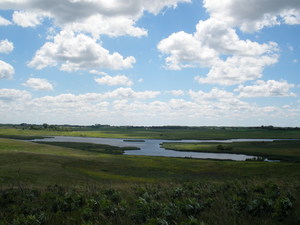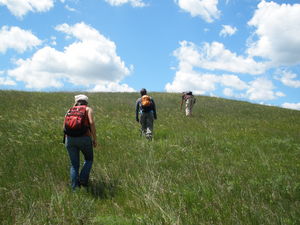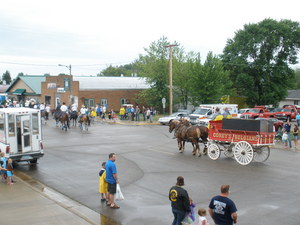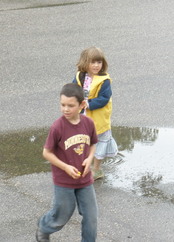So, in an attempt to fit as many sampling needs as possible, here are the sites that we will be sampling for aphids, juvenile plants, and some tissue samples, along with the sampling strategies:
Large and Less Isolated
Staffanson(SPP)
Landfill(LF)
KJ’s
Medium
Nessman (Ness)
East Riley (Eri)
Steven’s Approach (Stevens)
Northwest of Landfill (NWLF)
Small
Randt
East of Town Hall (ETH)
We will use a couple different sampling strategies for the different remnants in order to try and randomize them as much as possible. These should accomodate Daniel’s, Amy’s and a portion of Jennifer’s project. Note: All belt transects are 1/2 m unless otherwise noted.
Staffanson – Select 3 random locations in both the burned and unburned plots using randomly selected ULM coordinates, and find them using the Trimble GPS. Then, choose a random compass direction and run the belt transect roughly 10 m in that direction.
Landfill – Choose 3 random locations on the East Hill (Trimble again), choose a random direction, and do a 3-5 m belt transect in that direction. If more plants are needed, go a little further
KJ’s – Choose 3 random locations, choose a random direction, and do a 3-5 m belt transect. Go further if needed.
Nessman – Since this is a roadside remnant, choose 5 random points along the road edge, and extend the belt perpendicular from the road to the cornfield.
East Riley – choose 5 random points along the road edge, and extend the belt perpendicular from the road to the edge of the remnant
Steven’s Approach – Choose a bunch of random points along the road, and inspect to see if there are plants present. If not, go to the next point.
Northwest of Landfill – choose 5 random points along the road edge, and extend the belt perpendicular from the road to the edge of the remnant.
Randt – Choose a bunch of random points along the road, and inspect to see if there are plants present. If not, go to the next point.
East of Town Hall – Select random points used for seedling search, and look for plants there.





